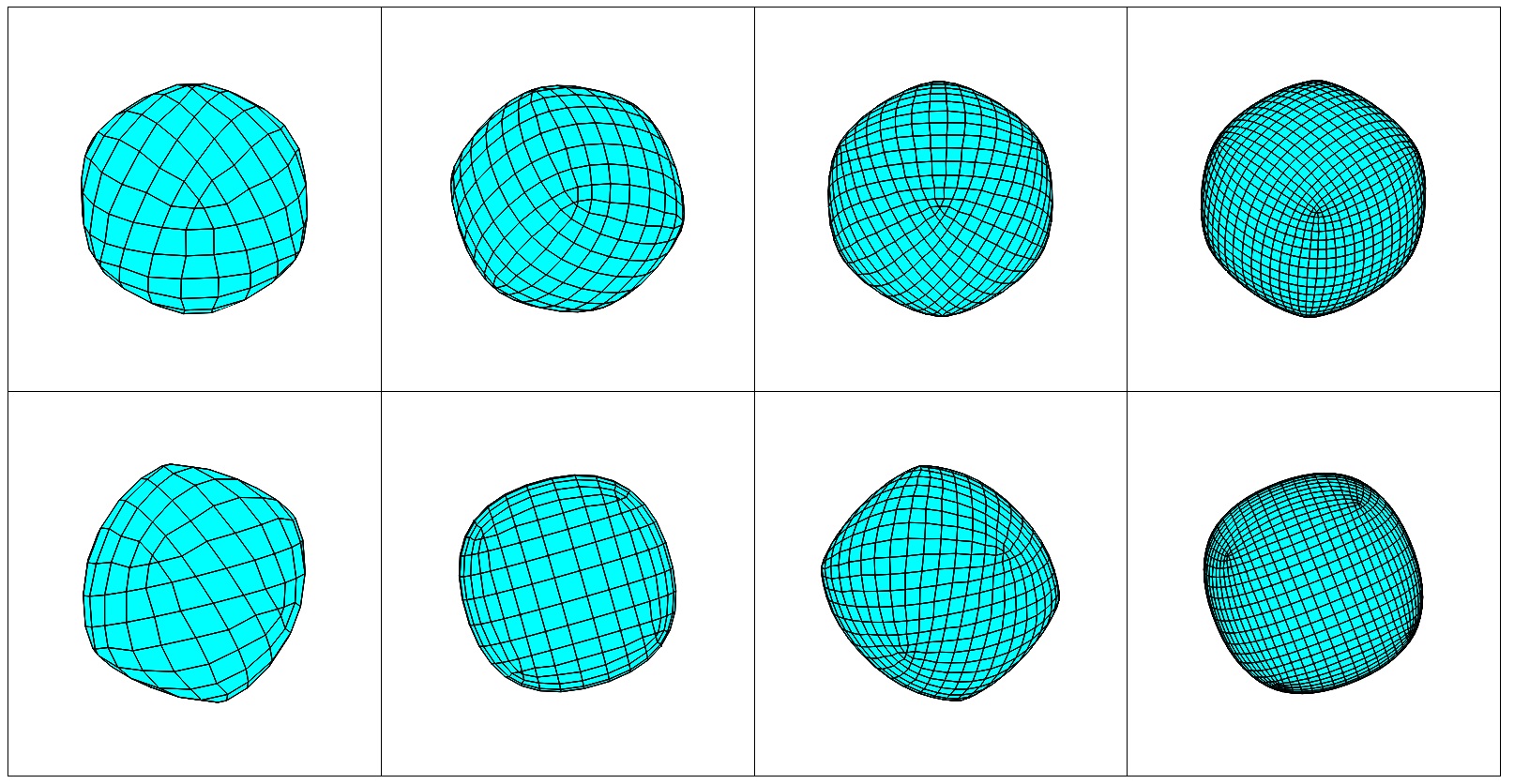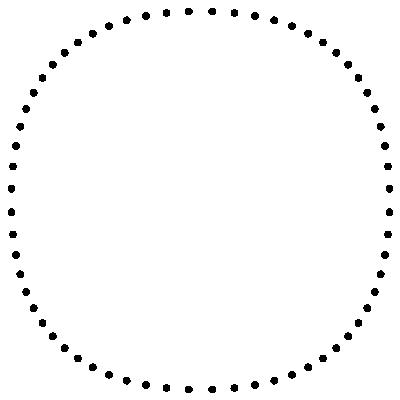The limit can be within $\varepsilon$ of any convex polytope:
Start with a polytope $P$ then replace each vertex $v$ by three vertices $v_1,v_2,v_3$ forming a triangle with sides of length (less than) $\varepsilon$ with centroid $v.$ and containing no point of $P$ other than $v.$ This gives a polytope $P_1 \supset P$ with three times as many vertices but with all points within $\varepsilon$ of (the closest point of) $P.$ Then as the edge midpoint process is applied to $P_1$ one will get a nested series of polytopes all containing $P.$ $P_1$ will have many faces aside from the tingy triangles and the centroids of these faces will be in the limit body, so the limit os strictly larger than $P.$
I'd still like to know the exact limit for a regular tetrahedron (or irregular, it shouldn't matter) and other simple cases.
Here are the first nine stages for $P_1$ the cube (not shown) with vertices $(\pm 2,\pm 2,\pm 2).$ The centroids of the $6$ faces, at distance $\sqrt{4}$ from the origin, will be in the limit body. One is $[2,0,0].$
Then $P_2$ is a cuboctahedron ($14$ faces, $12$ vertices) introducing $8$ new centroids all at distance $\sqrt{16/3}$. One is $[4/3 ,4/3,4/3].$
Then $P_3$ has $26$ faces and $24$ vertices. This introduces $12$ centroids all at distance $\sqrt{9/2}.$ One is $[0,3/2,3/2].$
After this is $P_4$ with $50$ faces and $48$ vertices. The $24$ new centroids are all at distance $\sqrt{147/32}.$ One is $[7/8,7/8,7/4].$
Finally in this picture is $P_5$ with $98$ faces and $96$ vertices. There are $48$ new centroids introduced. Half are like $[0,7/8,15/8]$ at distance $\sqrt{137/32}$ and half are like $[7/8,23/16,23/16]$ at distance $\sqrt{627/128}.$
I'm not sure how much this reveals other than that the limit body is not a sphere. The centroids introduced, which will remain centroids at each stage and are extreme points of the limit body are $6$ at distance $2$ then $8$ at distance$\approx 2.3094$ then $12$ at distance $\approx 2.1213$ then $24$ at distances $\approx 2.1433$ and finally $24$ each at distances $\approx 2.0691,2.2132.$

In general it is non-trivial to find the faces and edges for the convex hull of a set of points (even given that all the points are vertices.) However given the information on $P_i$ it is easy to get $P_{i+1}$: Replace each face by the midpoint polygon and for each vertex find the faces it is on, from each one take an edge joining the midpoints of the two appropriate edges and then use these edges to list these points in a valid order.
Here are $P_i$ for $i=6,7,8,9.$ Each is shown twice. Once centered on a triangle and once not. Notice that the even and odd cases look different. In the top view of $P_8$ it may look as if three triangles and the diamonds meet at a degree $6$ point. However that point is actually a tiny triangle and the "triangles" are trapezoids with a very short side.

The "equator" for $P_9$ looks like this

